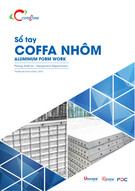
Journal of Science and Technology in Civil Engineering, HUCE, 2025, 19 (1): 131–141
A ROBUST XGBOOST-BASED MULTI-OBJECTIVE
OPTIMIZATION ALGORITHM FOR NONLINEAR
TRUSS STRUCTURES
Manh-Cuong Nguyena, Manh-Hung Hab, Ngoc-Thang Nguyen a,
Van-Thuat Dinhb, Viet-Hung Truong a,∗
aFaculty of Civil Engineering, Thuyloi University, 175 Tay Son, Dong Da, Hanoi, Vietnam
bFaculty of Building and Industrial Construction, Hanoi University of Civil Engineering,
55 Giai Phong road, Hanoi, Vietnam
Article history:
Received 27/02/2025, Revised 07/3/2025, Accepted 25/3/2025
Abstract
This paper presents MOEA/D-EpDE XGBoost, a novel multi-objective optimization (MOO) algorithm de-
signed for efficient and accurate design optimization of nonlinear inelastic steel truss structures. The algo-
rithm integrates a gradient boosting machine learning model (XGBoost) with a dynamic resource allocation
multi-objective evolutionary algorithm (MOEA/D-DRA) and an improved pbest-based Differential Evolution
(EpDE) algorithm. XGBoost serves as a surrogate model for computationally expensive finite element analy-
ses (FEA), significantly reducing computational costs while maintaining solution accuracy. The performance
of MOEA/D-EpDE XGBoost is compared against five other established MOO algorithms (NSGA2, SPEA2,
GDE3, MOEA/D, and a standard ME algorithm) using a 47-bar powerline truss benchmark problem. Results
demonstrate that the proposed algorithm achieves superior convergence, diversity, and computational efficiency
compared to existing algorithms, while maintaining solution quality.
Keywords: multi-objective optimization; inelastic analysis; metaheuristic; XGBoost; MOEA/D; EpDE.
https://doi.org/10.31814/stce.huce2025-19(1)-11 ©2025 Hanoi University of Civil Engineering (HUCE)
1. Introduction
The design optimization of truss structures, especially when considering nonlinear inelastic ma-
terial behavior, presents a significant computational challenge [1–3]. Traditional methods, heavily
reliant on computationally expensive finite element analyses (FEA) to determine structural responses
under diverse loading conditions, become prohibitively time-consuming [1–3]. This is particularly
true within the framework of multi-objective optimization (MOO), where the goal is to identify a
set of optimal designs that effectively balance competing design criteria, rather than a single, abso-
lute optimum [4–6]. The inherent complexities of nonlinear inelastic analysis, compounded by the
need for extensive exploration of the design space necessary to locate Pareto optimal solutions, result
in substantial computational costs. As a result, traditional MOO algorithms are often impractical for
real-world applications involving large-scale truss structures. This necessitates the development of in-
novative and efficient optimization strategies that effectively manage computational resources while
maintaining solution quality.
A promising avenue for improving the efficiency of MOO in this context is the integration of ma-
chine learning (ML) algorithms. ML models can serve as surrogate models, efficiently approximating
the complex relationship between design variables and structural responses. This reduces reliance on
computationally intensive FEA. By training an ML model on a relatively small dataset of FEA results,
∗Corresponding author. E-mail address: truongviethung@tlu.edu.vn (Truong, V.-H.)
131








































